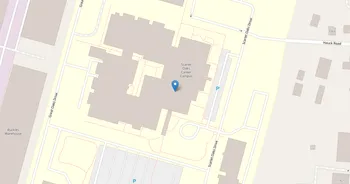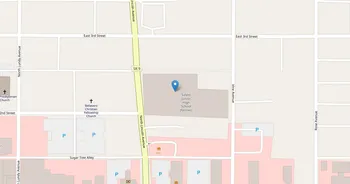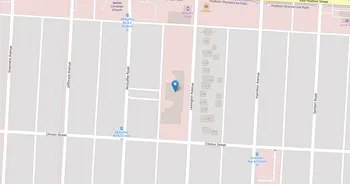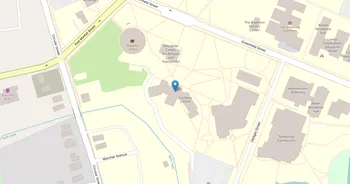Good Samaritan College of Nursing and Health Science : Overview, Courses, Scholarships & Rankings
About Good Samaritan College of Nursing and Health Science
Tucked into Cincinnati's medical hub, Good Samaritan College of Nursing and Health Science is known for practical, patient-centered education in the health sciences. Students learn in close-knit classrooms and spend time in simulation spaces and skills labs that mirror real clinical settings. Academic support runs deep, with accessible faculty, tutoring, and advising that helps keep coursework on track without losing sight of the human side of care.
Campus life leans collaborative and service-minded. Student groups plan volunteer projects, wellness events, and study meetups, while the city's parks, museums, coffee spots, and riverfront offer easy ways to unwind. Career prep is built in through clinical experiences, resume help, and connections to area hospitals and community providers. The culture feels friendly, focused, and steady, with a tradition of celebrating milestones as students step into professional roles.
Key Institutional Details
Contact & Profile
Academic & Institutional
Academic Programs & Fields of Study
Good Samaritan College of Nursing and Health Science offers 2 degree programs across 1 major academic fields, graduating approximately 126 students annually. The most popular fields by graduate volume are Health (2 programs, 126 graduates). Explore program details, award levels, and graduate demographics below.
Health (2 programs, 126 graduates)
Healthcare Professions, Medical Sciences and Clinical Practice
| Program Name | Graduates | Gender Distribution | Award Levels | CIP Code |
|---|---|---|---|---|
| Registered Nursing | 115 |
|
Associate's
Bachelor's
|
51.3801 |
| Medical Assistant | 11 |
|
Certificate (1-2 yrs)
|
51.0801 |
Admission Requirements & Test Scores
Comprehensive overview of admission criteria, standardized test score ranges, and application requirements for prospective students at Good Samaritan College of Nursing and Health Science.
Application Requirements
Data based on IPEDS for 2022-2023 academic year. Test score ranges represent the middle 50% of admitted students (25th-75th percentile). Requirements may vary by program.
Tuition, Fees & Estimated Costs
Overview of tuition rates, housing, and other annual education expenses for undergraduate and graduate students
Financial Aid & Student Support
Summary of scholarships, grants, student loans, and financial aid statistics for undergraduate students
Student Success Metrics
Graduation rates and post-graduation earnings to help assess student outcomes and long-term value of education.
Loan Burden & Repayment Outcomes
Breakdown of loan repayment rates and student debt levels by income and dependency status.
Frequently Asked Questions
Find answers to the most common questions about Good Samaritan College of Nursing and Health Science
How much does it cost to attend Good Samaritan College of Nursing and Health Science?
The annual tuition at Good Samaritan College of Nursing and Health Science is $15,470 for in-state students. When including room and board, books, and other expenses, the total estimated cost is approximately $17,120 for in-state students. Additional costs include room and board $10,726 (off-campus) and books and supplies $1,650.
Data based on IPEDS program completions for 2022-2023 academic year. Tuition and cost estimates are approximate and may not include all fees, personal expenses, or transportation costs.
What academic programs and degree levels does Good Samaritan College of Nursing and Health Science offer?
Good Samaritan College of Nursing and Health Science offers 2 academic programs across 1 major fields of study, with available degree levels: Certificate (1-2 yrs), Associate's, Bachelor's, Other Award.
Most popular program areas include:
- Healthcare Professions, Medical Sciences and Clinical Practice (2 programs)
Data based on IPEDS program completions for 2023-2024 academic year. Numbers reflect programs where students graduated, not all offered programs.
What is the acceptance rate for Good Samaritan College of Nursing and Health Science?
Good Samaritan College of Nursing and Health Science has an 16.9% acceptance rate and a 100% yield rate, making it highly selective.
Admission statistics breakdown:
- Total applicants: 189
- Students admitted: 32
- Students enrolled: 32
Data based on IPEDS for 2022-2023 academic year. Admission statistics may vary by program and application cycle.
What financial aid and scholarships are available at Good Samaritan College of Nursing and Health Science?
Good Samaritan College of Nursing and Health Science provides financial aid to 4% of first-time, full-time students, with average grants of $9,299 and average loans of $12,288.
Average financial aid amounts by type:
- Pell grants: $5,769
- State/Local grants: $3,675
- Institutional grants: $11,737
- Federal loans: $5,778
The university supports 4 students with grants and 10 students with loans annually.
Data based on IPEDS for 2022-2023 academic year. Financial aid amounts and percentages may vary by program, enrollment status, and individual circumstances.
What is the average salary for Good Samaritan College of Nursing and Health Science graduates?
Good Samaritan College of Nursing and Health Science graduates earn a median salary of $61,177 after 6 years and $66,111 after 10 years.
The salary range 10 years after graduation spans from $41,873 (25th percentile) to $89,694 (75th percentile).
Data based on IPEDS for 2022-2023 academic year. Salary data reflects graduates who received federal financial aid (approximately 60% of all graduates). Actual earnings may vary significantly based on program, location, and individual circumstances.
Related Universities




Found something useful? Help others discover it too! Share with friends, on social media, or save for later - every share helps someone find the information they need.